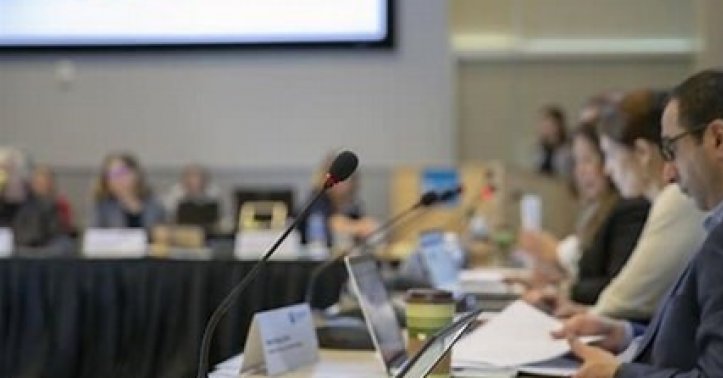
Navigating FDA Meetings: A Comprehensive Guide for Biopharma Companies
The U.S. Food and Drug Administration (FDA) plays a pivotal role in regulating pharmaceuticals, biologics, and medical devices. For companies navigating drug development and approval, engaging with the FDA through formal meetings is crucial. These interactions provide clarity on regulatory expectations, allowing sponsors to address concerns and streamline product development.
Understanding the different types of FDA meetings, their significance, and how to request them effectively can significantly impact the approval timeline of a drug or medical device. This article explores the FDA meeting process, guidelines for requesting a meeting, and best practices to maximize engagement.
Types of FDA Meetings
The FDA offers three main types of meetings with sponsors, categorized based on the stage of development and the purpose of the discussion.
1. Type A Meetings
Type A meetings are critical for stalled development programs or addressing significant issues preventing progress. These meetings typically focus on dispute resolutions, clinical holds, and special protocol assessments.
2. Type B Meetings
These meetings are typically pre-investigational new drug (Pre-IND), end-of-phase I (EOP1), and end-of-phase II (EOP2) meetings. They help sponsors align with the FDA on study designs, endpoints, and regulatory expectations.
3. Type C Meetings
Type C meetings cover any other topics that do not fall into Type A or B categories. These discussions may include aspects of manufacturing, labeling, or post-marketing commitments.
Importance of FDA Meetings
Engaging in early and strategic discussions with the FDA can offer several advantages:
- Regulatory Clarity: Provides insight into FDA expectations, reducing the risk of submission delays or rejections.
- Risk Mitigation: Helps sponsors address potential regulatory concerns before submitting applications.
- Efficient Development Pathways: Aligns the company’s development plans with FDA feedback, potentially expediting market approval.
How to Request an FDA Meeting
Requesting an FDA meeting requires a structured approach. Companies must submit a formal request, typically in the form of a meeting package containing critical information.
1. Preparing the Meeting Request
A successful request includes:
- A clear and concise statement of the meeting’s purpose.
- A brief background of the development program and its current status.
- A list of specific questions for FDA review.
- Proposed agenda and desired meeting format (teleconference, written response, or in-person).
2. Submitting the Request
Meeting requests must be submitted electronically via the FDA’s Electronic Submissions Gateway (ESG) or through other acceptable channels. The FDA typically responds within 14 days to confirm whether the request is granted and provides details on scheduling.
3. Preparing for the Meeting
Once the meeting is scheduled, preparation is key. This includes:
- Assigning subject matter experts to address FDA questions.
- Creating a well-structured presentation to support discussions.
- Rehearsing responses to potential regulatory concerns.
For a detailed breakdown of the FDA’s procedural requirements, refer to the official FDA Guidance on Formal Meetings.
Key Considerations for a Successful Meeting
1. Understand the Meeting Scope
Before the meeting, clarify whether it is an advisory discussion or if the FDA will provide binding feedback. This distinction is essential for decision-making.
2. Be Concise and Focused
The FDA appreciates clear and direct communication. Avoid unnecessary details and stick to the core issues requiring regulatory input.
3. Provide Supporting Data
Well-organized data presentations help substantiate the sponsor’s position. Visual aids such as charts or graphs can enhance comprehension.
4. Follow Up Effectively
After the meeting, summarize key takeaways and follow up with any required documentation. This ensures alignment on the next steps and addresses any outstanding concerns.
For more insights on optimizing FDA meetings, explore industry best practices shared by BioPharma Dive.
Common Challenges and How to Overcome Them
1. Delayed FDA Responses
To minimize delays, ensure the meeting request is comprehensive and adheres to FDA guidelines.
2. Unclear FDA Feedback
If FDA responses are ambiguous, seek clarification through formal follow-up communications or additional meetings.
3. Insufficient Meeting Preparation
Lack of preparation can lead to ineffective discussions. Conduct mock meetings internally to anticipate FDA questions and concerns.
Utilizing FDA Meeting Request Guidelines
Following proper procedures is essential when engaging with the FDA. Understanding the FDA meeting request guidelines ensures compliance with regulatory expectations and a streamlined submission process.
Conclusion
FDA meetings are invaluable for ensuring regulatory alignment and expediting the drug approval process. Proper planning, clear communication, and adherence to guidelines can enhance the effectiveness of these engagements. By leveraging best practices and staying informed about regulatory expectations, sponsors can navigate the FDA meeting process with confidence and efficiency.








